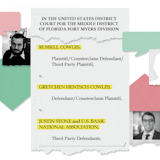Alicia Robles grew up watching her mother make wedding dresses and other clothes in southern Mexico. As a girl, she watched and learned, but she didn’t get back into sewing until she had her own children.
“When I became a mom, and I can fix stuff for my kids, I feel good about myself,” Robles said.
On a recent afternoon, Robles and two other women mended old clothes, packs and linens in the basement of the Franklin Library in Minneapolis. The women are experienced sewers hired by the nonprofit Reuse Minnesota to staff their Mend-It Clinics, a series of events where the public can bring in damaged clothes and other textile goods for free repairs.
The clinics, which started in January with a grant from the Minnesota Pollution Control Agency (MPCA), are part of the state’s broader effort to cut down on textile waste. Fast fashion and clothing made of fabric blends are contributing to growing piles of textiles that wind up in the trash.
The MPCA is trying to get a handle on the issue and identify buyers and sellers for recycled fabrics, said Susan Heffron, a recycling market coordinator with the agency. The data isn’t perfect, but the MPCA estimates that somewhere between 134,000 and 192,000 tons of textiles are thrown away each year in Minnesota.
The best way to prevent that? Getting people to fix and mend what they already own.
“We want to reduce what we buy, and then we want to reuse and fix, then recycle,” Heffron said.
The true cost of textiles is hidden to modern Americans, according to Reuse Minnesota executive director Emily Barker. Synthetic fabrics, overseas labor that is often exploited and an online retail culture that allows free deliveries and returns can fog the public’s understanding of what goes into producing clothing and other textile products.



